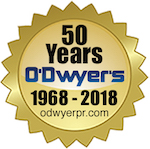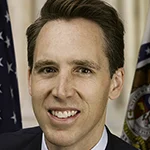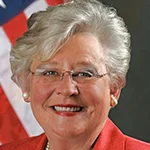 |
The July O’Dwyer’s magazine will look back on 50 years of PR coverage and explore what lies ahead for PR and the communications business.
Cellphones, miracles of communication, dominate society. Media and other communicators format their content to fit the small screens.
The “get tough” with the press attitude of President Donald Trump is mirrored in the press relations of many companies and institutions throughout the land.
Articles by staffers and contributors will recall the PR/media scene of 1968 and contrast it with today’s digital and web-dominated environment.
Among many changes is the flip from a male-dominated profession to one that is overwhelmingly female.
PR/Media A Different World in 1968
The PR/media world this writer experienced 50 years ago was radically different from the current environment.
“PR,” once synonymous with press relations, later became one of many disciplines involved in shaping campaigns.
Only one of the ten largest firms ranked by O’Dwyer’s for 2017 uses “PR” in its name. Only three of the top 25 do so. “PR” is seen as a term that put limits on the activities of a firm.
PR people used to make a point of personally interacting with reporters. PR pros would often show up at our offices and chat over a cup of coffee. More common was lunch. We often had lunch five days a week at various midtown New York locations. Standard dress for reporters and PR people, almost all of them male, was a suit and tie.
In a few decades, dress habits shifted to informal clothes including jeans. There was no need for formal business dress if the main or only form of contact was by phone or email.
This writer launched a weekly newsletter in 1968 after my employer of six years, the former Hearst New York Journal-American, closed the paper where I had been doing a daily ad column. The Chicago Tribune then hired me to do an ad column from New York. Many of the PR contacts I built up doing the columns for a total of eight years subscribed to the NL, making it a financial success.
PR Services Industry Exploded
The PR services industry, specialist firms working directly for clients or helping PR firms to serve clients, vastly expanded in the past 50 years.
Fifty-five types of services by more than 700 firms were catalogued in the 84-page January 2018 O’Dwyer’s PR Buyer’s Guide, the 25th year of publication of this database.
These included firms providing media lists of all types and the techniques for reaching them, satellite media tours/roadshows, media training, crisis management, video production, executive search, conference planning, management consultants, merger specialists, graphic services, measurement and evaluation services, interactive/multimedia services, and photographers/stock photos, to name some of them.
Professionals working in the world of PR/marketing/advertising/social media benefit from the expertise offered by the service firms.
Vets Could Contrast PR in 1968 vs. 2018
PR veterans will be asked to assist us in contrasting the PR world of 50 years ago with today. Are there valuable practices that were common in 1968 that have been lost over the years?
A bedrock principle of PR was that what others say about you is more important than what you say about yourself—“third-party endorsement.”
Corporations and other news sources decided that their communications did not need endorsements by anyone else.
A basic measuring tool of the O’Dwyer ranking is the ratio of wages paid to employees. For most of the firms, that figure was close to 50%. Firms were supposed to devote at least half of their income to counseling and press relations.
Conglomerates purchased 18 of the 25 PR firms in the 1978 O’Dwyer ranking and there were fears that the entire independent PR firm sector would vanish. Edelman and other firms refused to join the parade.
The July O’Dwyer’s magazine will explore the changing role of “PR” in the marketing mix and examine how firms are coping with the new environment.
One question is how PR and related subjects should be taught at the undergraduate and graduate levels?


 Democrats play their favorite game, which is bashing Big Oil for its effort to cast doubt on global warming... Wingnut Marjorie Taylor Greene justified her vote against the Antisemitism Awareness Act by sputtering antisemitic nonsense... The deeply politically polarized USA stands united in worries about 2024 election coverage.
Democrats play their favorite game, which is bashing Big Oil for its effort to cast doubt on global warming... Wingnut Marjorie Taylor Greene justified her vote against the Antisemitism Awareness Act by sputtering antisemitic nonsense... The deeply politically polarized USA stands united in worries about 2024 election coverage. What would you do if you have received a call from one of Musk’s few remaining top lieutenants to see if you would be interested in advising him on PR matters?
What would you do if you have received a call from one of Musk’s few remaining top lieutenants to see if you would be interested in advising him on PR matters?  Nike finally throws in the towel and admits that its new MLB uniforms are a flop... A good chunk (34 percent) of TikTokers support a ban on the Chinese app.... "Lede of the Week Award" goes to Wall Street Journal reporter Angus Berwick for story abourt John Jacob Astor IV's gold pocket watch.
Nike finally throws in the towel and admits that its new MLB uniforms are a flop... A good chunk (34 percent) of TikTokers support a ban on the Chinese app.... "Lede of the Week Award" goes to Wall Street Journal reporter Angus Berwick for story abourt John Jacob Astor IV's gold pocket watch. Republican tough guys Josh Hawley and Tom Cotton want Biden to send the National Guard to Columbia University to put an end to student protests... Bernie blasts Bibi for insulting America's intelligence by equating criticism of Israel's government with antisemitism... German court convicts former financial PR exec who claims he wasn't aware that trading on tips is illegal.
Republican tough guys Josh Hawley and Tom Cotton want Biden to send the National Guard to Columbia University to put an end to student protests... Bernie blasts Bibi for insulting America's intelligence by equating criticism of Israel's government with antisemitism... German court convicts former financial PR exec who claims he wasn't aware that trading on tips is illegal.  Southern governors claim they know what's best for their working class, and it's not pay raises... A Ukrainian human rights group played a key role in convincing House Speaker Mike Johnson to hold a vote to send arms to Ukraine, Israel and Taiwan... Trump Media & Technology Group blames short-selling and not lousy outlook for its stock slump.
Southern governors claim they know what's best for their working class, and it's not pay raises... A Ukrainian human rights group played a key role in convincing House Speaker Mike Johnson to hold a vote to send arms to Ukraine, Israel and Taiwan... Trump Media & Technology Group blames short-selling and not lousy outlook for its stock slump.


 Have a comment? Send it to
Have a comment? Send it to 
No comments have been submitted for this story yet.